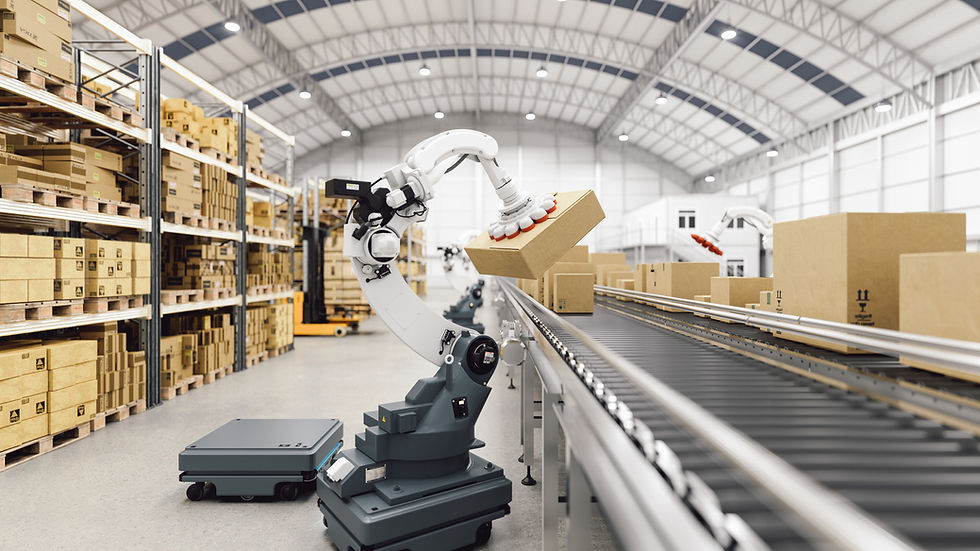Bridging the AI Gap in Supply Chains: Insights from My Research Journey
- Bradley Rogers
- Jul 27
- 3 min read
As a supply chain planning director and doctoral researcher focused on artificial intelligence (AI) integration in supply chains, I've observed firsthand how businesses grapple with implementing AI effectively. Despite substantial investment and enthusiasm, many organizations struggle to realize AI's promised value. My ongoing doctoral research at Fairfield University explores precisely this challenge: why do some AI models excel in lab tests but falter when deployed in real-world supply chain environments?
Through my literature review process, I've identified several traits repeatedly cited as critical in scholarly and industry publications: predictive accuracy, latency, explainability, robustness, and regulatory compliance. Traditional benchmarks, primarily emphasizing predictive accuracy, often overlook these other operationally significant traits. For example, a model might predict demand perfectly in testing but fail to deliver timely insights during peak operational pressures or might struggle to gain acceptance from stakeholders uncomfortable with opaque "black-box" outputs.
Recognizing these critical traits, I've developed a practical framework called the Trait–Constraint–Model (TCM), designed to help supply chain leaders systematically select AI models suited to their specific contexts.
What Inspired My Research?
In my professional role overseeing supply chain operations, I've seen the limitations of deploying generalized AI tools without clear alignment to our operational realities. The COVID-19 pandemic particularly highlighted these shortcomings, as traditional forecasting models struggled to handle unprecedented disruptions. These experiences pushed me to question how supply chain leaders could better select AI models tailored not just to ideal conditions, but to their real-world constraints.
The TCM Framework: My Approach
The Trait–Constraint–Model (TCM) evaluation framework, developed through my ongoing doctoral research, enables organizations to identify the best AI models for their unique supply chain scenarios. Here's a snapshot of the methodology:
Identify Essential Traits: Prioritize factors repeatedly identified in literature as critical, such as accuracy, real-time speed, transparency, resilience, and scalability.
Map Operational Constraints: Clearly outline constraints including data availability, technical infrastructure, regulatory compliance, and organizational readiness.
Align Models Strategically: Use the TCM matrix to match AI models (like LSTM networks, XGBoost, linear regression, or Graph Neural Networks) to your identified traits and constraints.
Theoretical Grounding and Practical Relevance
In my literature review, I've utilized the Technology-Organization-Environment (TOE) framework, which contextualizes how technology traits such as accuracy and transparency interact with organizational readiness and external regulatory pressures. This theoretical grounding enhances the practical utility of the TCM evaluation framework, particularly for small-to-medium-sized enterprises (SMEs). SMEs frequently face significant barriers due to limited resources and data infrastructure, making targeted AI model selection even more crucial.
Currently, my empirical validation leverages reputable datasets such as the M5 Forecasting Competition and AI4I Predictive Maintenance dataset, reinforcing the TCM framework's applicability across diverse real-world scenarios. A significant component of my research addresses critical trade-offs, such as the balance between explainability and performance, that organizations must consider when selecting AI models. Recognizing these trade-offs is vital, as ineffective AI model selection can lead to costly forecast errors and inventory issues, with industry-wide implications amounting to billions annually.
Practical Insights from My Work
In applying this framework within my professional environment, I've witnessed clear benefits:
Targeted Model Selection: Shortlisting only the most viable AI candidates, significantly cutting down wasted resources in lengthy trials.
Enhanced Collaboration: Achieving quicker buy-in from diverse stakeholders including compliance teams, IT, and frontline operations through transparent, well-documented model decisions.
Reduced Deployment Risk: Proactively addressing potential implementation issues like data readiness and compliance requirements, ensuring smoother rollouts.
Realizing AI's True Potential
My research journey is ongoing, but the insights and framework developed thus far already provide valuable pathways for organizations seeking real-world AI success. By shifting the dialogue from "Which model is most accurate?" to "Which model best fits our real-world constraints?", businesses can significantly improve their AI investment outcomes, enhancing operational resilience, reducing costs, and improving customer satisfaction.
I'm excited to continue exploring this intersection of AI and supply chain management and invite other supply chain professionals to share their experiences. Together, we can evolve the tools and frameworks that enable smarter, more effective AI adoption in our industry.
Stay tuned for more updates as my research progresses, and feel free to reach out if you're interested in discussing or collaborating on AI-driven supply chain innovations.



Comments